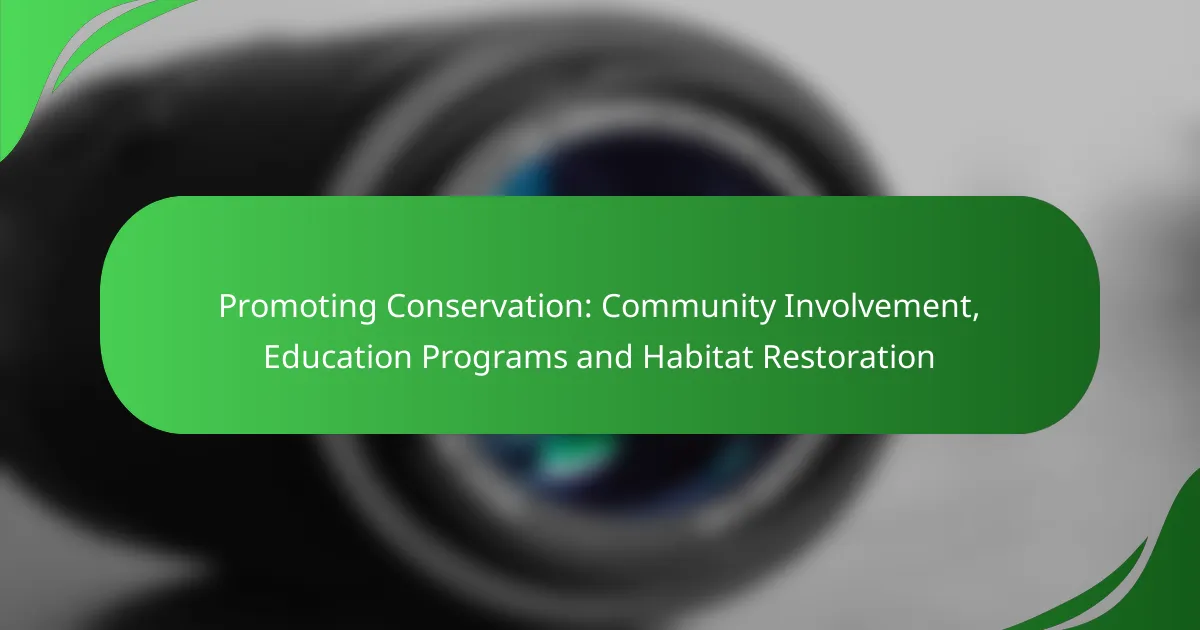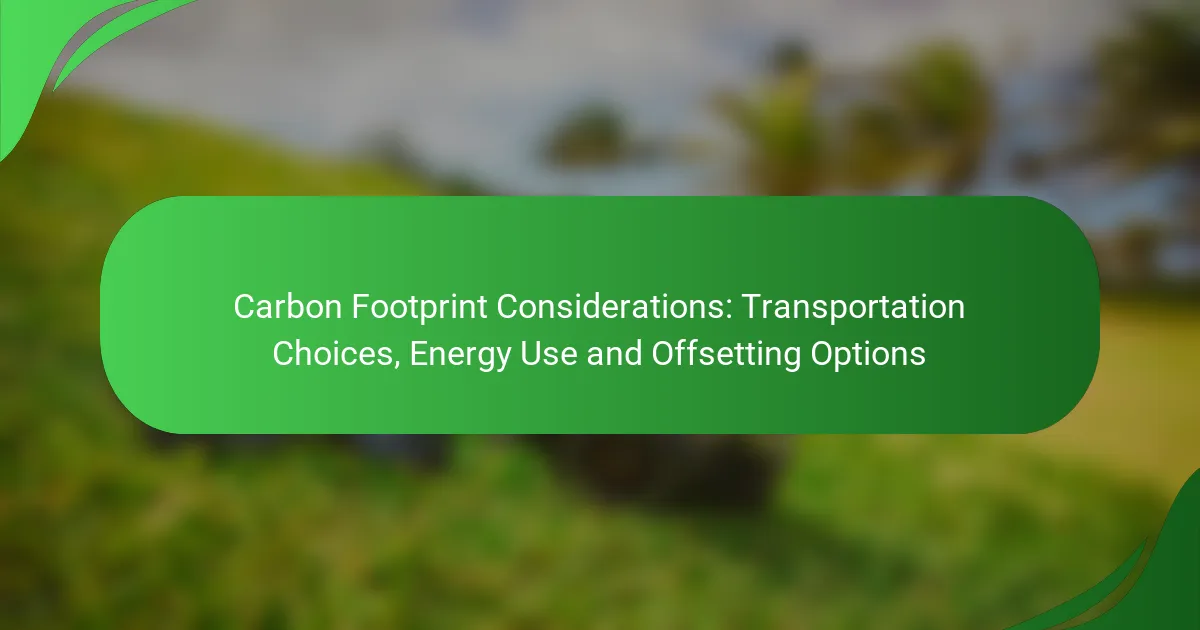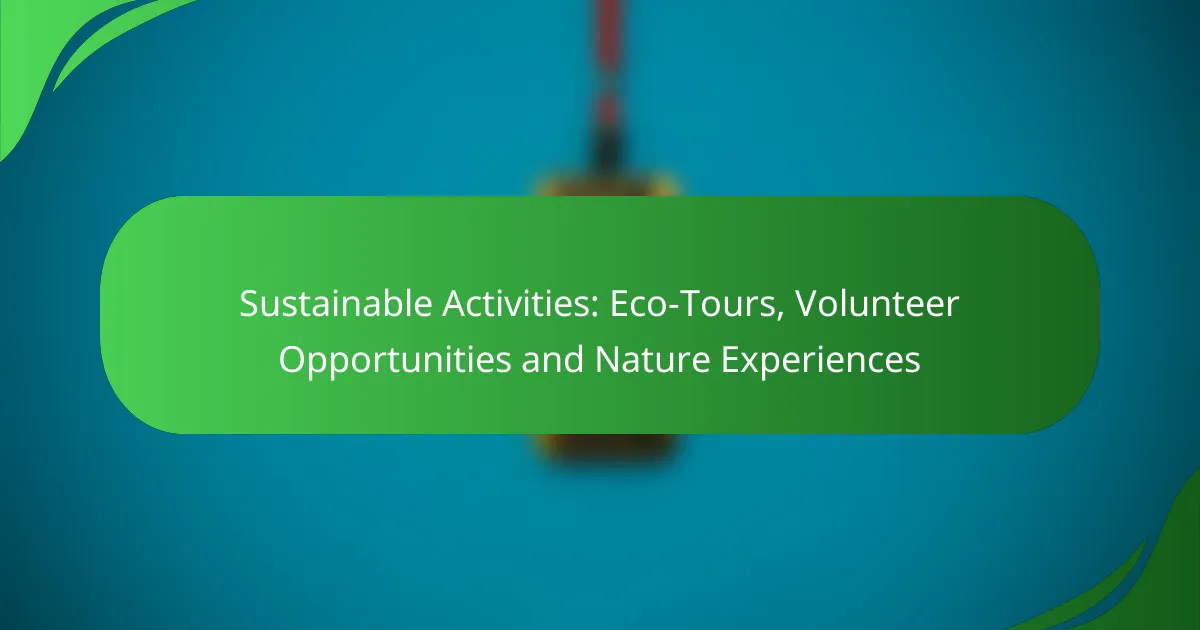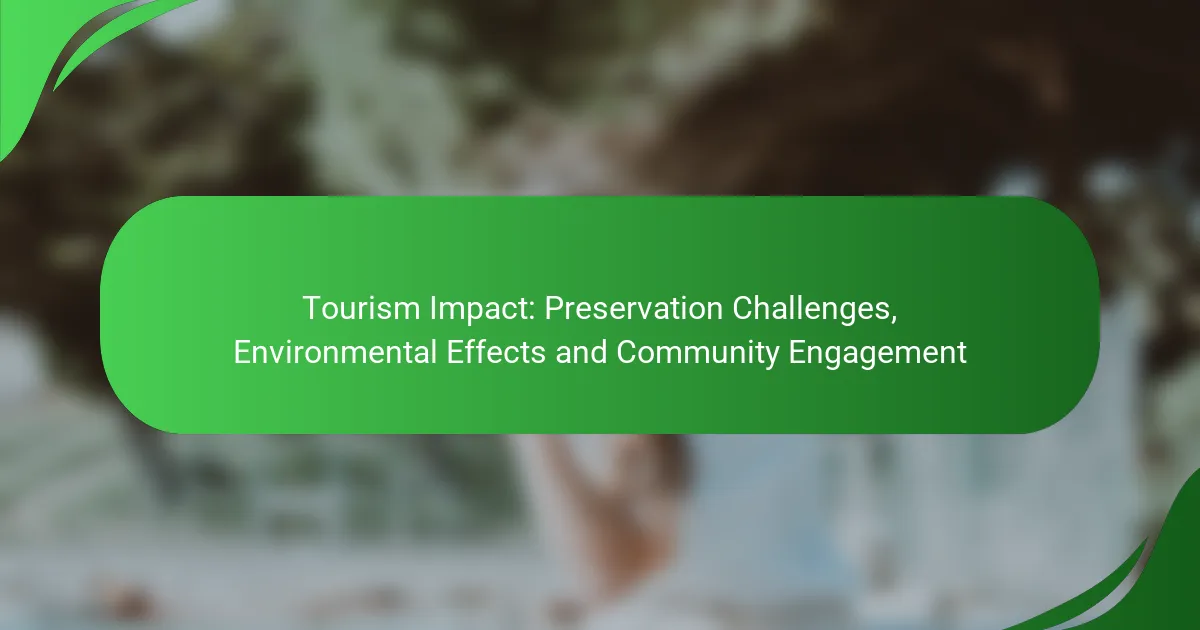Promoting conservation through community involvement, education programs, and habitat restoration is essential for fostering a sustainable future. Engaging residents in local conservation efforts not only enhances environmental protection but also cultivates a sense of responsibility and awareness. Educational initiatives empower individuals with the knowledge needed to actively participate in these efforts, while habitat restoration revitalizes ecosystems, ensuring their health and resilience for generations to come.
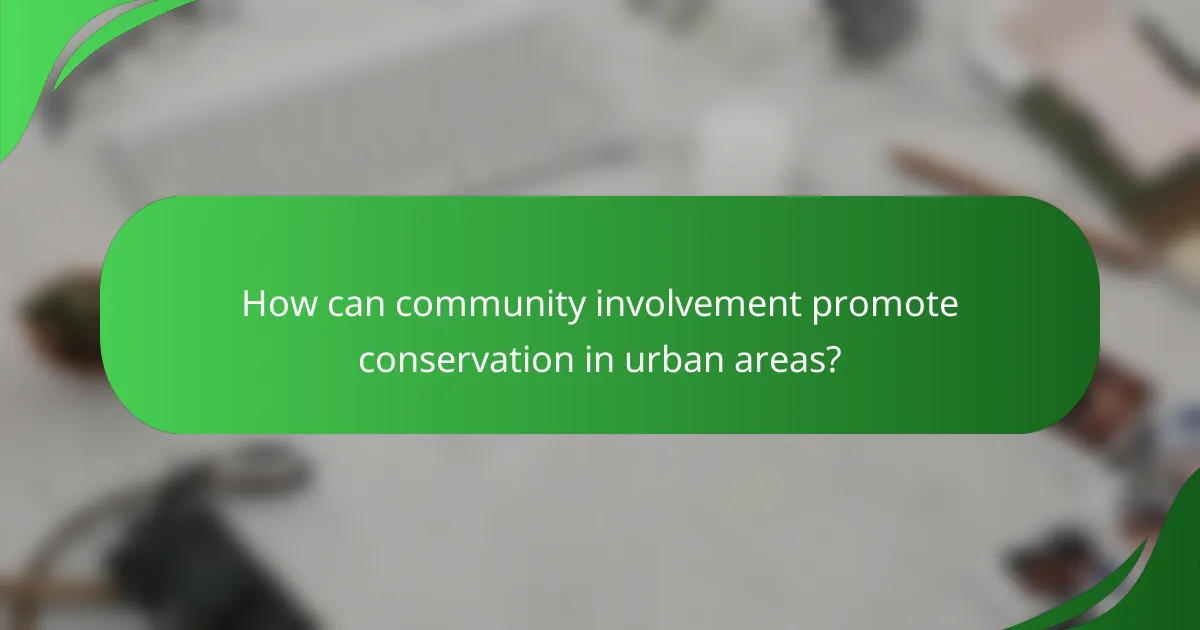
How can community involvement promote conservation in urban areas?
Community involvement can significantly enhance conservation efforts in urban areas by fostering local engagement and awareness. When residents participate in conservation activities, they contribute to the protection of their environment and promote sustainable practices within their neighborhoods.
Community clean-up initiatives
Community clean-up initiatives mobilize residents to remove litter and debris from public spaces, parks, and waterways. These events not only improve the aesthetic quality of urban areas but also prevent pollution that can harm local ecosystems.
Organizing a clean-up can be straightforward: choose a location, set a date, and promote the event through local social media channels or community boards. Providing supplies like trash bags and gloves can encourage participation and make the event more effective.
Local wildlife protection programs
Local wildlife protection programs focus on safeguarding urban biodiversity by creating habitats and protecting native species. These programs often involve monitoring wildlife populations and educating residents about the importance of preserving local fauna.
Engagement can take many forms, such as citizen science projects where community members track local species or volunteer opportunities with wildlife rehabilitation centers. These initiatives help residents develop a deeper connection to their local environment and its inhabitants.
Neighborhood conservation groups
Neighborhood conservation groups unite residents around shared conservation goals, such as habitat restoration or sustainable land use. These groups often collaborate with local governments and organizations to implement conservation strategies effectively.
Joining or forming a conservation group can provide residents with resources and support for their initiatives. Regular meetings, workshops, and community events can help maintain momentum and encourage ongoing participation in conservation efforts.
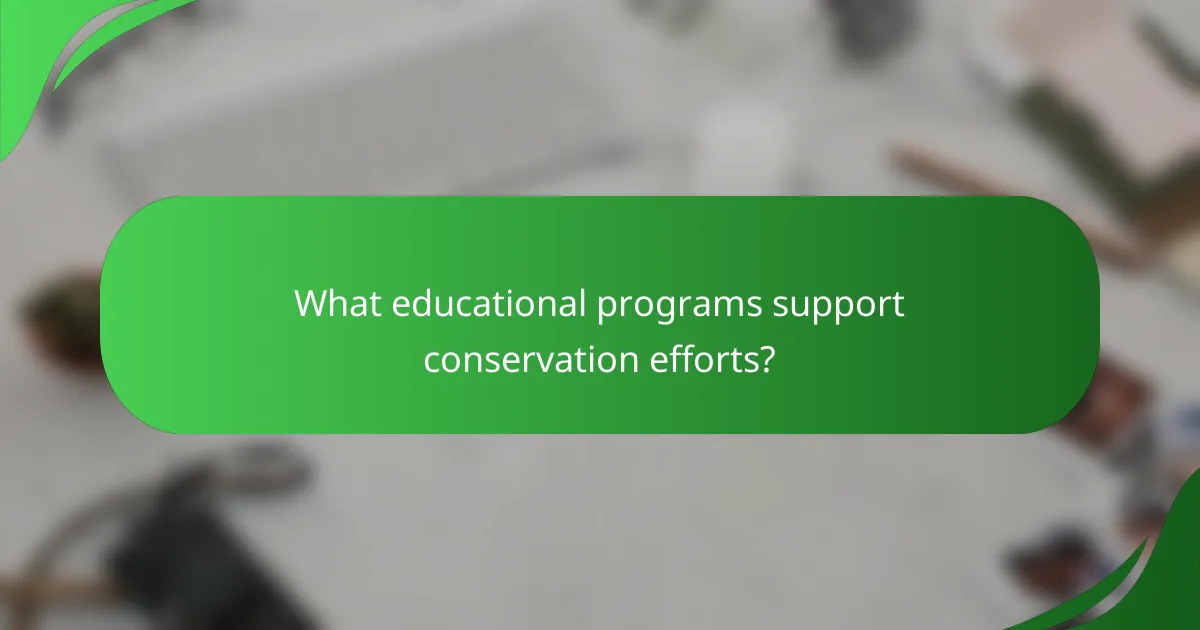
What educational programs support conservation efforts?
Educational programs play a crucial role in promoting conservation efforts by equipping individuals with knowledge and skills to protect the environment. These programs often focus on practical applications, fostering a sense of responsibility and community involvement in conservation initiatives.
School-based environmental education
School-based environmental education integrates conservation topics into the curriculum, helping students understand ecological principles and their impact on the environment. Programs may include hands-on activities, field trips to natural areas, and projects that encourage students to engage with their local ecosystems.
For example, students might participate in tree planting initiatives or water quality testing in nearby rivers. These experiences not only enhance learning but also instill a sense of stewardship for the environment among young people.
Workshops on sustainable practices
Workshops on sustainable practices provide practical training for community members to adopt eco-friendly habits. These sessions often cover topics such as waste reduction, energy efficiency, and sustainable agriculture, empowering participants to make informed choices that benefit the environment.
Local organizations frequently host these workshops, which may include demonstrations on composting, organic gardening, or using renewable energy sources. Engaging in these practices can lead to significant reductions in individual and community carbon footprints.
Online courses on habitat preservation
Online courses on habitat preservation offer flexible learning opportunities for individuals interested in conservation. These courses typically cover essential topics such as biodiversity, ecosystem management, and restoration techniques, allowing participants to study at their own pace.
Many platforms provide access to expert-led courses that include video lectures, interactive quizzes, and community forums for discussion. Completing these courses can enhance one’s understanding of habitat preservation strategies and inspire action within local communities.
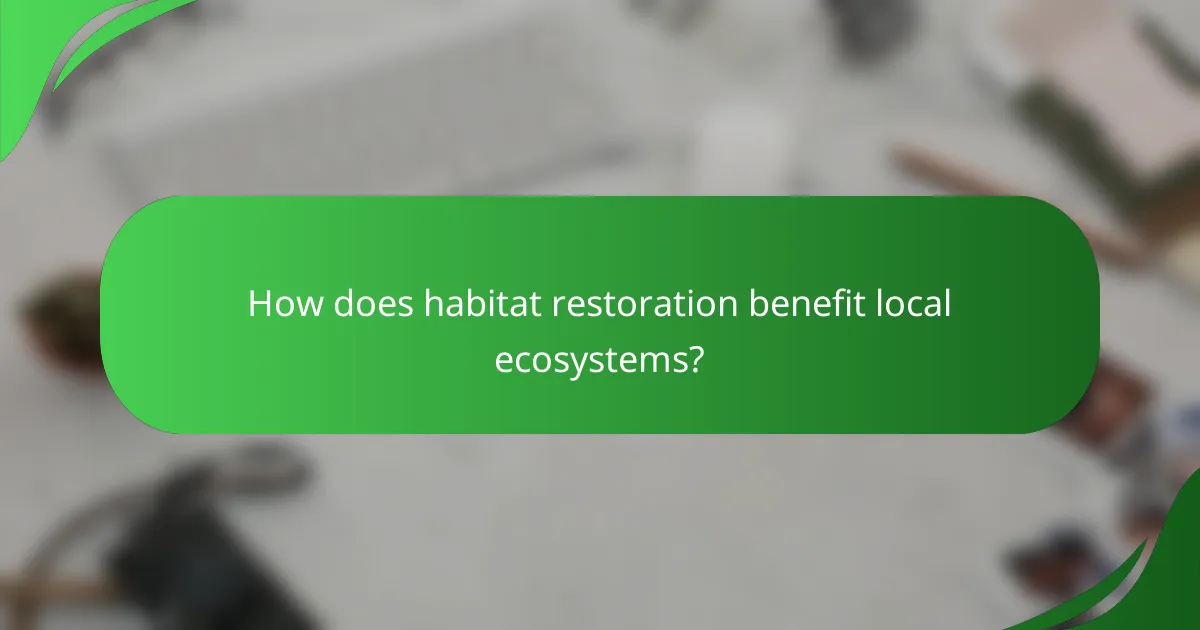
How does habitat restoration benefit local ecosystems?
Habitat restoration significantly enhances local ecosystems by revitalizing natural environments, which leads to improved ecological health and resilience. This process helps restore the balance of species, supports essential ecosystem services, and mitigates the impacts of human activities.
Improved biodiversity
Restoring habitats increases biodiversity by providing a conducive environment for various species to thrive. This can involve reintroducing native plants and animals, which helps create a balanced ecosystem where different species can coexist and support one another.
For example, planting native vegetation can attract pollinators and other wildlife, fostering a more diverse biological community. Higher biodiversity often leads to greater ecosystem stability, making it more resilient to environmental changes.
Enhanced water quality
Habitat restoration can lead to improved water quality by reducing pollutants and sediment runoff. Restored wetlands and riparian buffers act as natural filters, trapping contaminants before they enter water bodies.
For instance, reestablishing native vegetation along riverbanks can significantly decrease erosion and nutrient runoff, which in turn enhances the overall health of aquatic ecosystems. This is particularly important in agricultural areas where runoff can be a major issue.
Increased carbon sequestration
Habitat restoration contributes to increased carbon sequestration by enhancing the ability of ecosystems to absorb and store carbon dioxide. Forests, wetlands, and grasslands are particularly effective at capturing carbon, which helps mitigate climate change.
For example, restoring a degraded forest can lead to a significant increase in carbon storage over time, as trees and plants grow and accumulate biomass. This process not only benefits the environment but also supports climate action initiatives aimed at reducing greenhouse gas emissions.
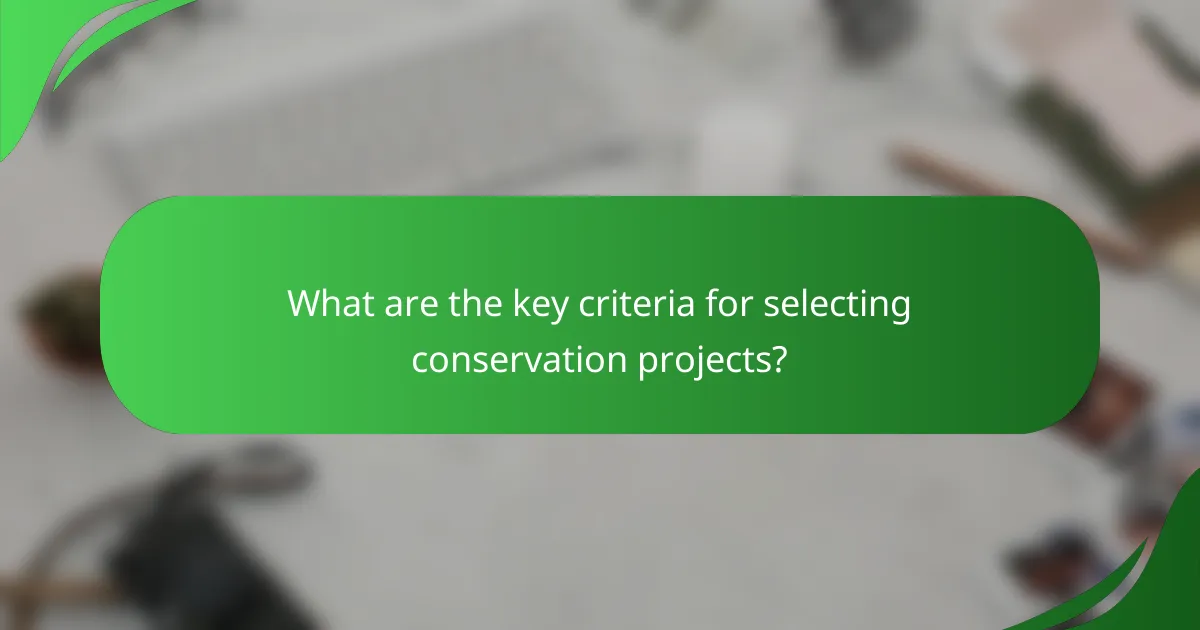
What are the key criteria for selecting conservation projects?
Key criteria for selecting conservation projects include assessing community engagement potential, conducting environmental impact assessments, and evaluating funding availability. These factors help ensure that projects are sustainable, effective, and supported by the local population.
Community engagement potential
Community engagement potential refers to the likelihood of local populations participating in and supporting conservation initiatives. Projects that actively involve community members tend to have higher success rates, as they foster a sense of ownership and responsibility.
To gauge engagement potential, consider conducting surveys or focus groups to understand community interests and concerns. Projects that align with local values and needs are more likely to receive support and participation.
Environmental impact assessment
An environmental impact assessment (EIA) evaluates the potential effects of a conservation project on local ecosystems. This process is crucial for identifying any negative consequences and ensuring that the project contributes positively to biodiversity and habitat preservation.
When conducting an EIA, consider factors such as species at risk, habitat types, and potential pollution sources. Engaging environmental experts can provide valuable insights and help create a balanced approach that minimizes harm while maximizing benefits.
Funding availability
Funding availability is a critical factor in determining the feasibility of conservation projects. Sufficient financial resources are necessary for planning, implementation, and ongoing maintenance of initiatives aimed at protecting natural habitats.
Explore various funding sources, including government grants, non-profit organizations, and private donations. Developing a clear budget and demonstrating potential returns on investment can enhance the likelihood of securing necessary funds.

Which organizations lead successful conservation initiatives?
Several organizations are at the forefront of successful conservation initiatives, focusing on protecting ecosystems, wildlife, and natural resources. These organizations often engage local communities, implement education programs, and lead habitat restoration efforts to achieve their goals.
The Nature Conservancy
The Nature Conservancy (TNC) is a global nonprofit dedicated to conserving the lands and waters on which all life depends. TNC employs a science-based approach to conservation, working with local communities to create sustainable solutions that benefit both nature and people.
One of TNC’s notable initiatives is the establishment of protected areas, which can range from small local parks to vast wilderness regions. They also engage in habitat restoration projects, such as reforestation and wetland restoration, which are crucial for maintaining biodiversity.
World Wildlife Fund
The World Wildlife Fund (WWF) is an international organization focused on wildlife conservation and reducing humanity’s impact on the environment. WWF collaborates with governments, businesses, and communities to promote sustainable practices and protect endangered species.
WWF’s initiatives often include education programs that raise awareness about conservation issues and encourage community involvement. They also work on habitat preservation projects, which can involve creating wildlife corridors to connect fragmented habitats, ensuring species can thrive.
Local land trusts
Local land trusts are nonprofit organizations that focus on protecting specific areas of land within a community. These trusts work to conserve natural spaces through land acquisition, conservation easements, and stewardship programs, often tailored to local needs and priorities.
By partnering with local stakeholders, land trusts can effectively manage and restore habitats, ensuring the preservation of local biodiversity. They often engage community members in volunteer opportunities, fostering a sense of ownership and responsibility towards local conservation efforts.
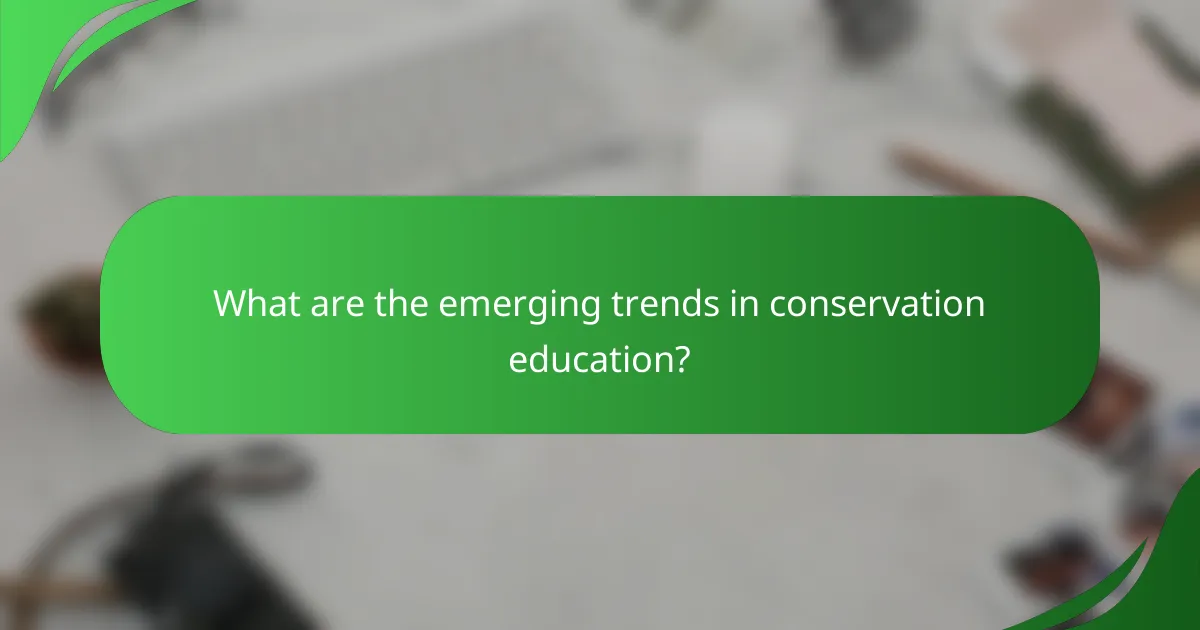
What are the emerging trends in conservation education?
Emerging trends in conservation education focus on community involvement, hands-on learning, and the integration of technology. These trends aim to engage diverse audiences and foster a deeper understanding of environmental issues.
Community Involvement in Conservation Education
Community involvement is increasingly recognized as a vital component of conservation education. Engaging local populations in conservation efforts helps to build a sense of ownership and responsibility towards natural resources. Programs often include volunteer opportunities, workshops, and local events that encourage participation.
For example, community-led initiatives such as tree planting days or clean-up events not only enhance local habitats but also educate participants about the importance of biodiversity. This hands-on approach can significantly increase awareness and commitment to conservation goals.
Technology in Conservation Education
Technology plays a crucial role in modern conservation education, making information more accessible and engaging. Online platforms, mobile apps, and virtual reality experiences allow learners to explore ecosystems and conservation efforts from anywhere. These tools can enhance understanding and retention of complex environmental concepts.
For instance, interactive apps that track wildlife sightings or provide information on local flora and fauna can motivate users to participate in citizen science projects. This integration of technology not only broadens the reach of educational programs but also caters to younger, tech-savvy audiences.
Hands-On Learning Experiences
Hands-on learning experiences are becoming a staple in conservation education, emphasizing experiential learning over traditional classroom settings. Programs that involve field trips, workshops, and practical projects allow participants to apply their knowledge in real-world situations.
Activities such as habitat restoration projects or wildlife monitoring provide valuable insights into ecological processes and the challenges of conservation. These experiences can be particularly impactful for students, as they foster a personal connection to the environment and encourage lifelong stewardship.
